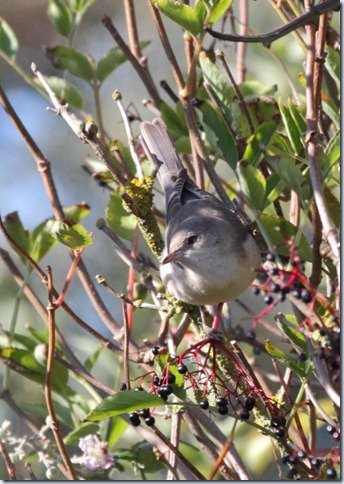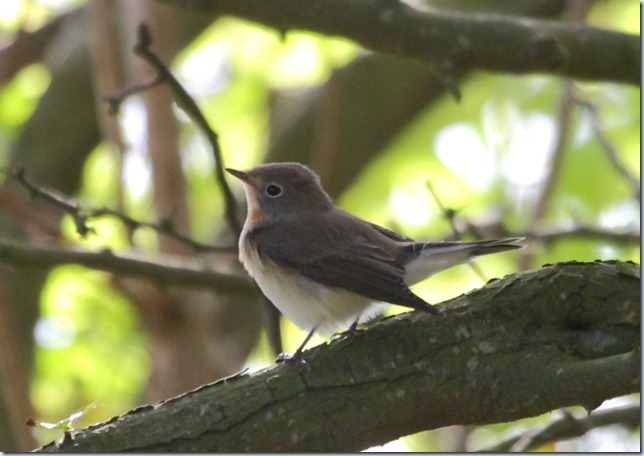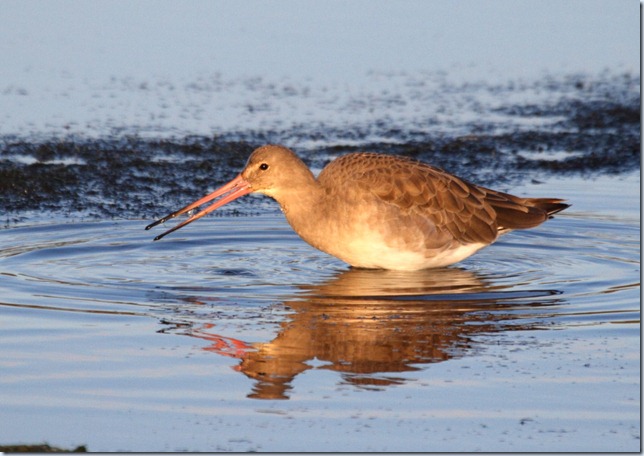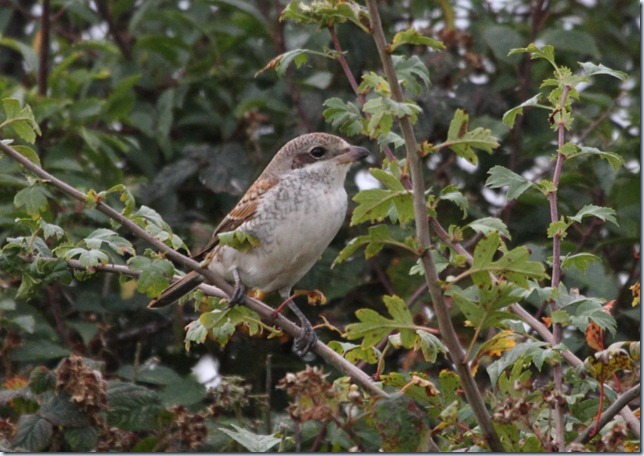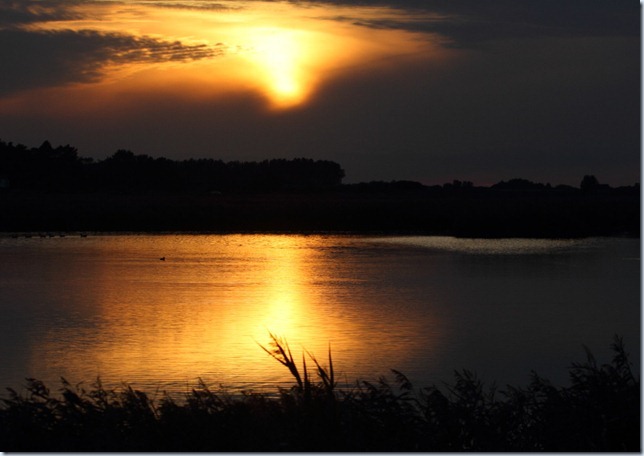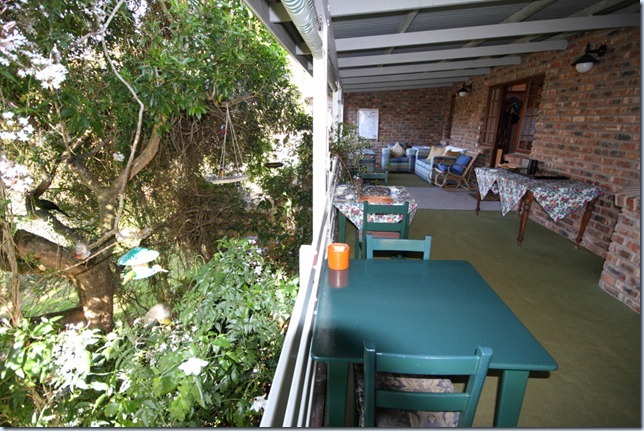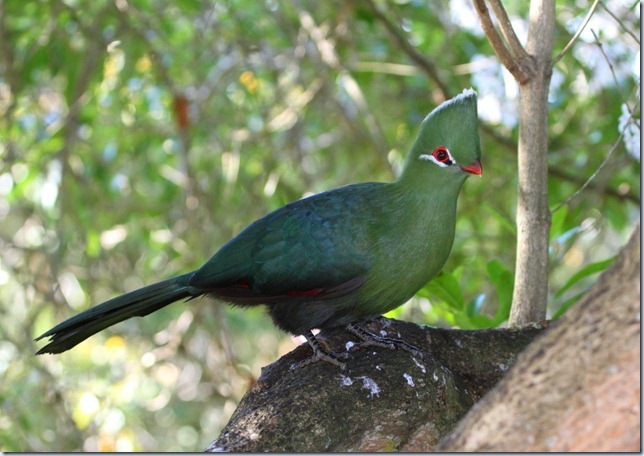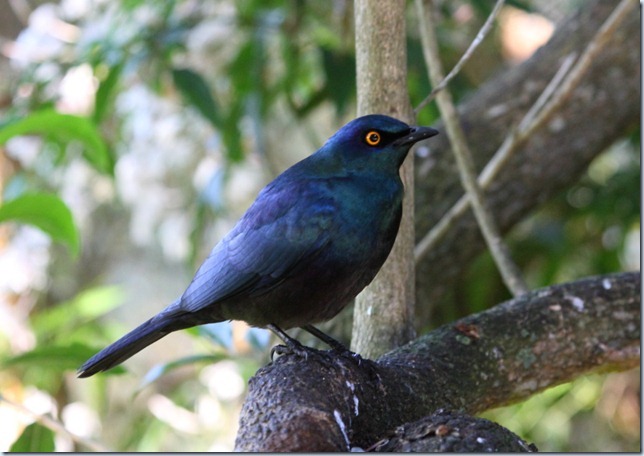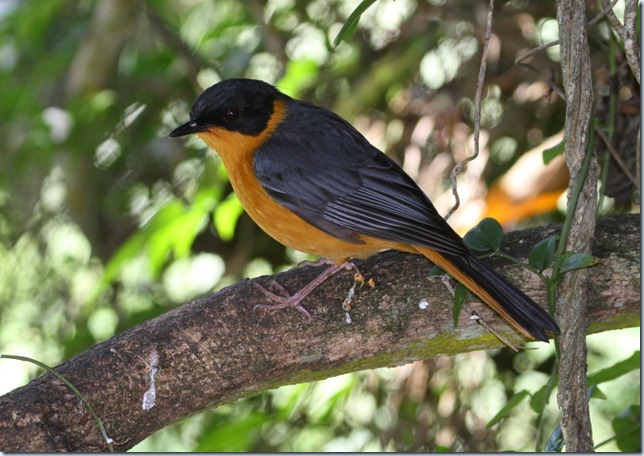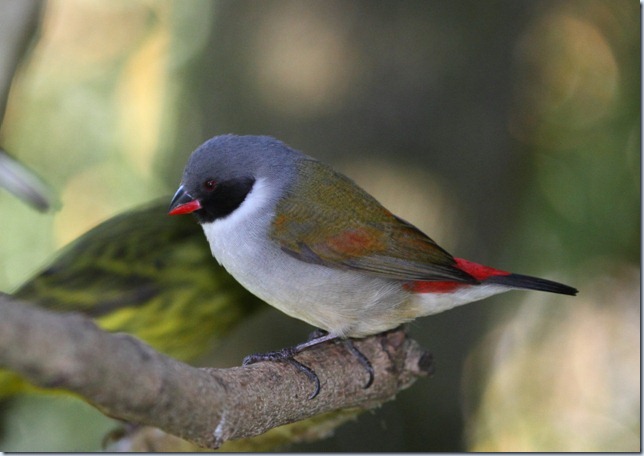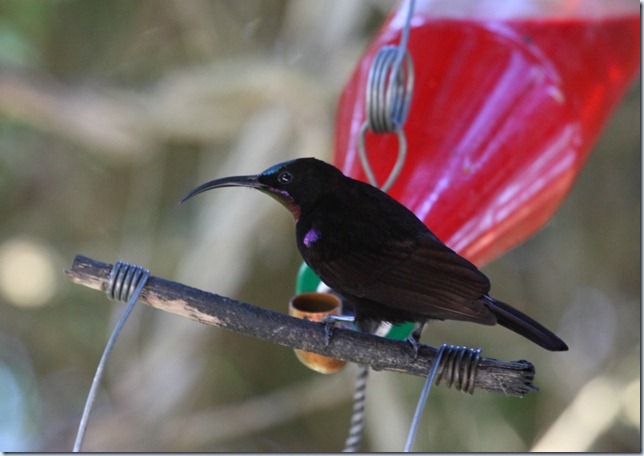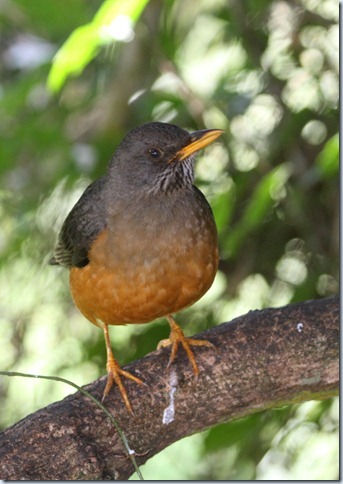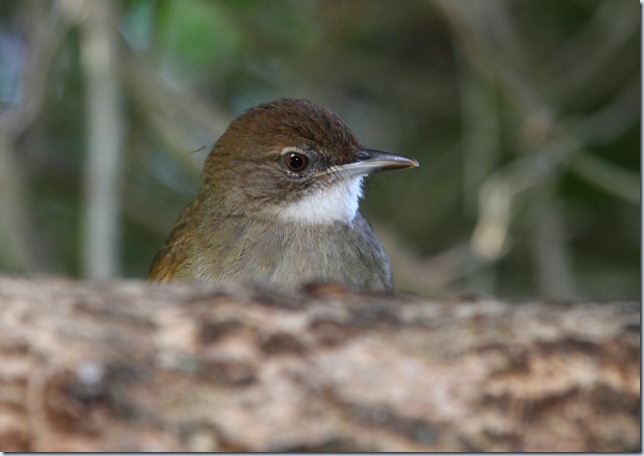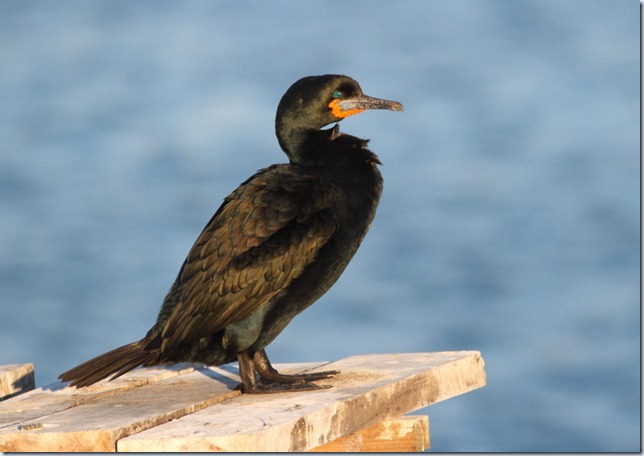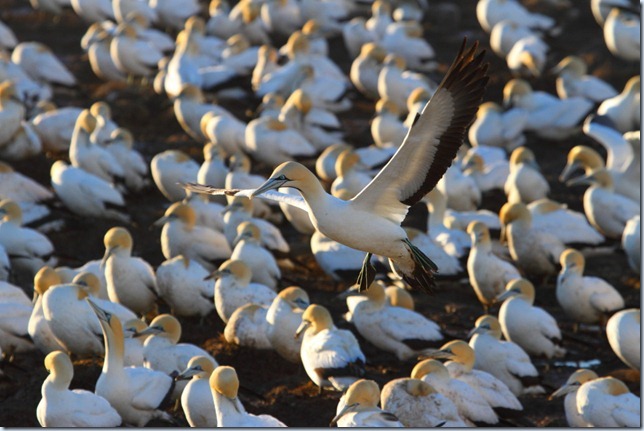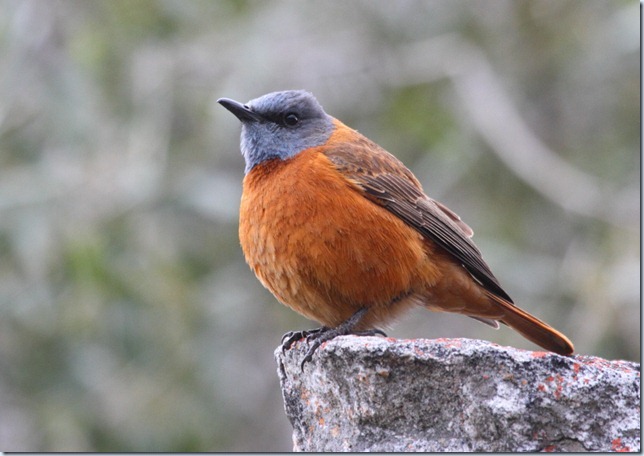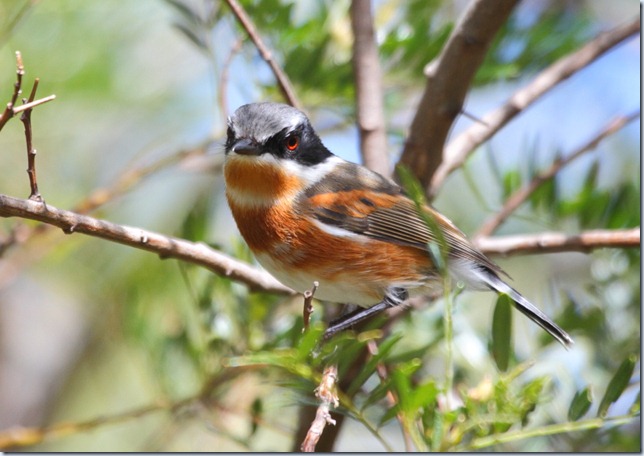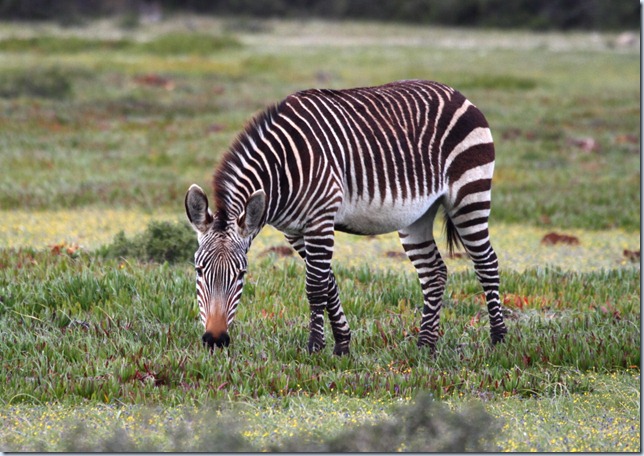One of the highlights of our holiday was a pelagic birding trip out of Simon’s Town (on the Cape peninsula) on Saturday. Given that our entire itinerary was booked up through Birding Africa, who have close links with Cape Town Pelagics, we’d planned this in from the start since I gather they are often over-subscribed. I can see why – the seabirding was nothing short of spectacular, and that was on a relatively quiet day!
Arriving at the harbour early in the morning, I was somewhat taken aback by the size of our boat – this was certainly not the Scillonian, or even the Sapphire! Max capacity was ten, comprising the skipper (Alan Blacklaws), bird guide (Dalton Gibbs) and just six birders. However, it became clear that the boat was built for speed, not for size, and we bombed along through the calm inshore water to Cape Point, before heading out up to 20 miles offshore in a search for trawlers hauling nets. Fortunately, we found one – and saw plenty of great birds.
To start with, the common ones…
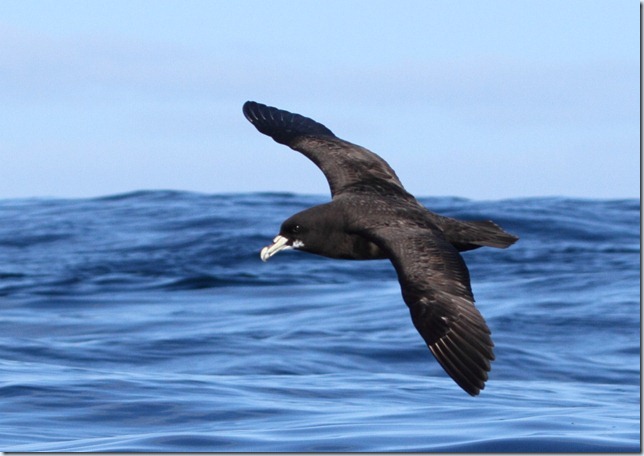
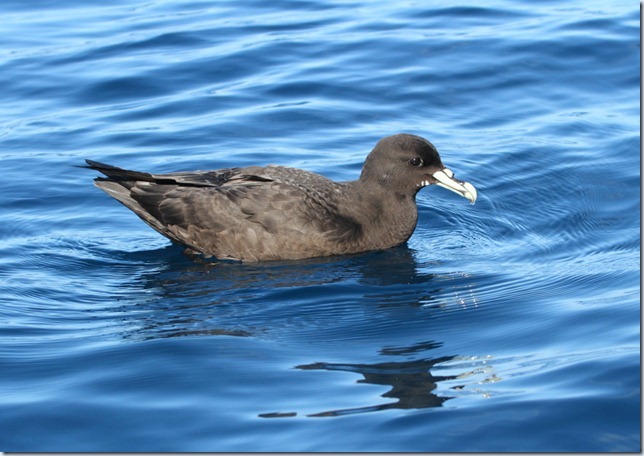
This guy is a White-chinned Petrel. Deceptively small and cute-looking on the water, they’re actually quite large, I guess about 30-40% longer wingspan (and broader-winged) than a Sooty Shear, which were also fairly common. We must’ve seen hundreds of the White-chinneds, sailing around on characteristically bowed wings.
Much more attractive, but just as abundant, were the Pintado (or Cape) Petrels. These are beautiful looking birds, with a chequered black-and-white upperwing. Hard to resist when you’re holding a camera!
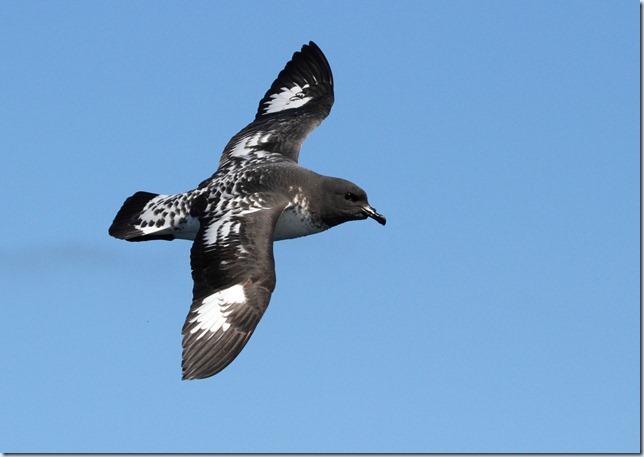
Other relatively common birds were Antarctic (Brown) Skuas, Cape Gannet, Kelp Gull and Wilson’s Petrel. But we’d come to look for bigger birds… like this ugly brute:
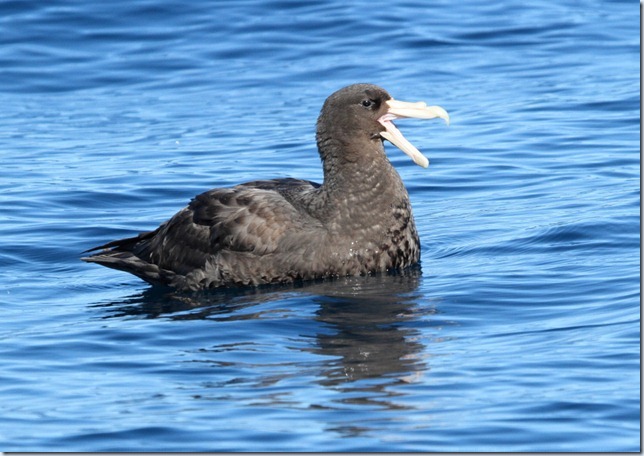
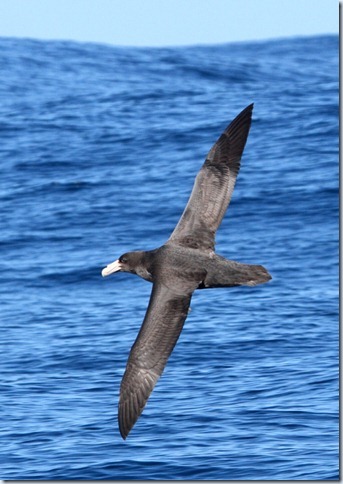
This is a Southern Giant Petrel, Macronectes giganteus. Dalton pointed out that Macronectes translates roughly as “giant death”… which sounds about right, especially if you happen to be a cute baby seal pup. Differentiating between Northern and Southern Giant Petrel isn’t straightforward – the colour of the bill tip is one decent feature, yellowy-green on Southern, and reddish-pink on Northern. The dark eye also suggests Southern. We did see a Northern briefly, but it didn’t hang around for photos. In flight, both species have a wingspan similar to the smaller albatrosses, and a noticeably hunch-backed appearance.
So, what about those albatrosses, then?!
The commonest species, showing up from just off Cape Point, was the Shy Albatross – we must’ve seen at least 100 birds, I reckon. The easiest feature to pick up was the almost totally white underwing, with only a very narrow black border, and peg marks at the leading edge of the base of the wing when seen well. Younger birds show the grey wash on the neck and breast sides, but I believe all ages remain paler on the mantle than the wings (unlike Black-browed, which are more uniformly dark right across).
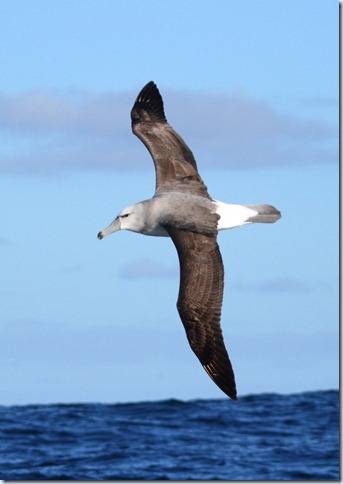
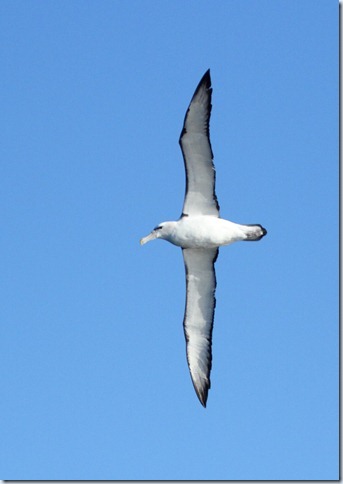
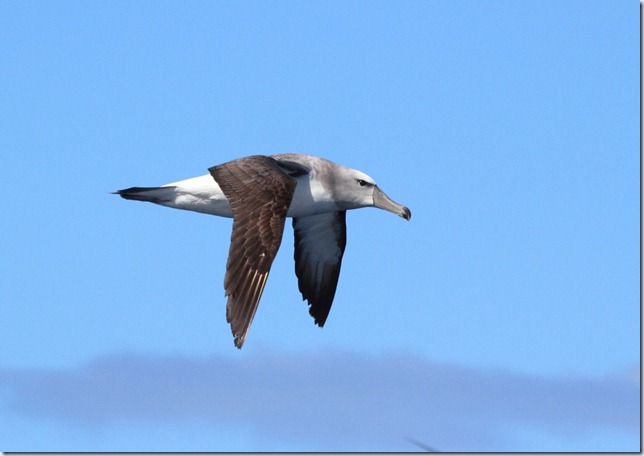
Once we’d got well clear of land, we also saw a decent number of Black-browed Albatross – the species most often encountered in European waters, albeit still as a mega-rarity. These are incredibly smart birds, the adults in particular.
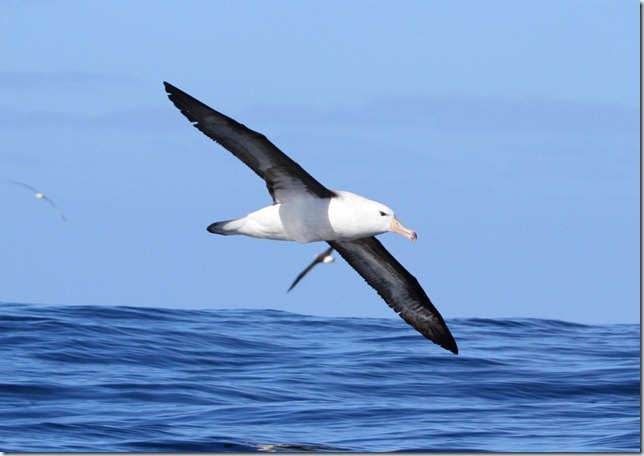
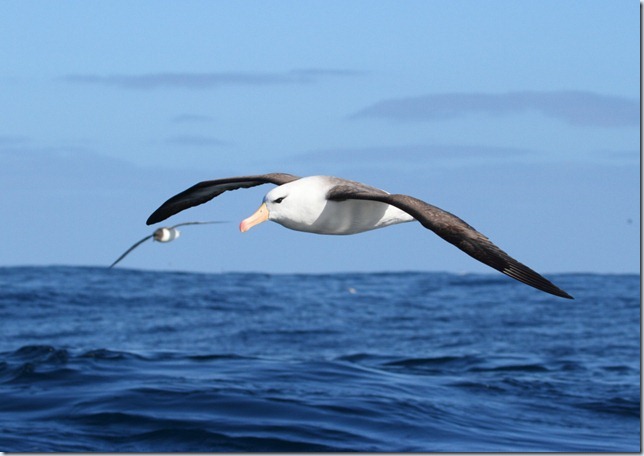
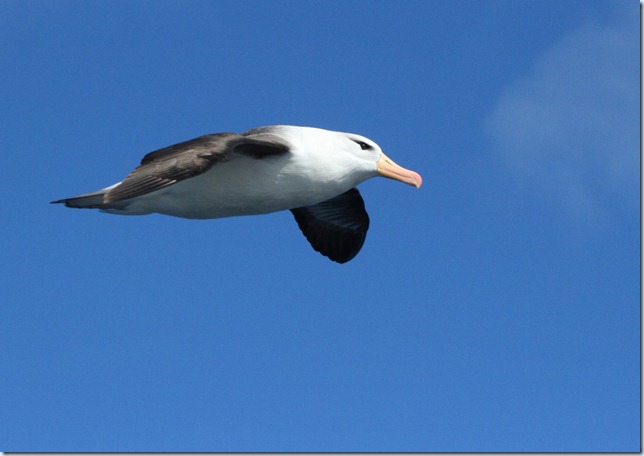
And then there was the best bird of the lot – a single Northern Royal Albatross, which sailed effortlessly past the back of our boat, looped round and back the way it came, and was then never seen again. Absolutely stunning, with an enormous 3m wingspan, completely white back, and completely black wings. They breed around New Zealand, and (like all the large albatrosses) have a worrying small and declining world population. I didn’t get any shots of this bird, but Dalton’s kindly emailed me these two record shots…
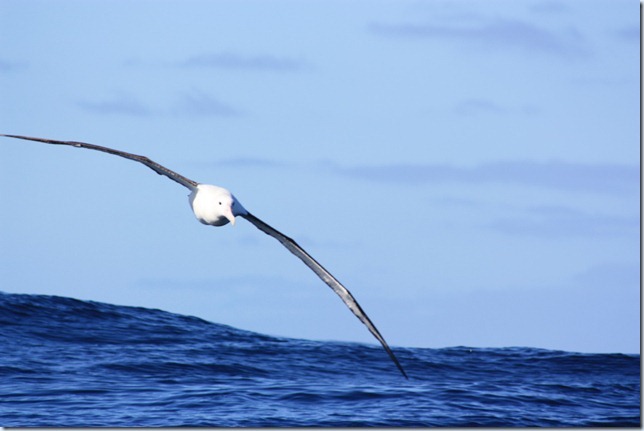
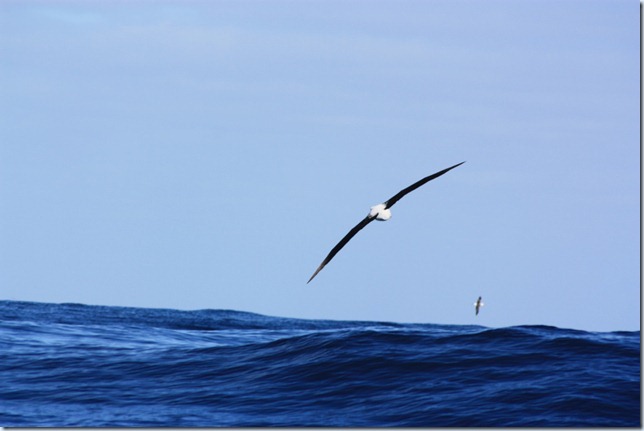
… what a bird, and what a trip! I’d love to go back and do it again, any time.
